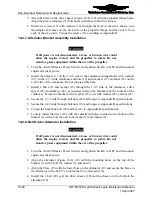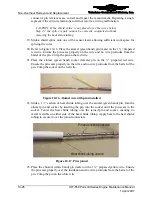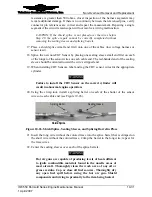
Non-Overhaul Removal and Replacement
Teledyne Continental Motors, Inc.
TM
10-32
IOF-550 Permold Series Engine Maintenance Manual
1 April 2007
23.
Apply heat to the center of the sealing sleeves until they shrink to the wire. Heat the
sleeve ends until the sealing rings melt and flow along the wires (Figure 10-27).
Figure 10-27.
Splice with Sealing Sleeves Installed
24.
Center the shield splice over the wire splices and the cable shields.
25.
Apply heat to the center of the sleeve until the solder melts and the shield and tube
shrink. Figure 10-28 shows a completed splice.
Figure 10-28.
Completed Splice
26.
Inspect the continuity of the sensor lead wires. If the inspection reveals poor
continuity readings and/or if any wire appears damaged, isolate the faulty wiring and
repeat the procedure.
27.
If splice was for wire repair, proceed to step 28. If sensor was removed for
replacement, locate the appropriate reference below to install the sensor.
WARNING
Failure to install the CHT Sensor on the correct cylinder will
result in abnormal engine operation
a.
Install the tagged CHT Sensor of the low voltage harness into the respective
cylinder head using the bayonet adapters. Insert the CHT probe into the bayonet
adapter against the spring force and twist it to lock it in place. Verify that the
bayonet adapter with the CHT sensor is securely installed in place.
b.
Install the MAT sensors according to Section 10-6.18 “Manifold Air Temperature
(MAT) Sensor Installation.”
c.
Install the fuel injector solenoid according to section 10-6.12 “Fuel Injection
Solenoid Installation.”
28.
If all lead wiring is intact, bundle the sensor leads as required. For proper operation of
the engine, route, clamp, support, and protect the wires in the low voltage harness in a
manner to prevent chafing, fretting, and wear of the lead wires. Route and secure the
harness according to the “Harness Routing” section of Appendix C.
CAUTION: Avoid making sharp bends or kinks in the lead wires.
29.
Perform a FADEC Level I Diagnostics according to instructions in Chapter 8,
Troubleshooting. Pay particular attention to the sensor output for the repaired circuit.
















































